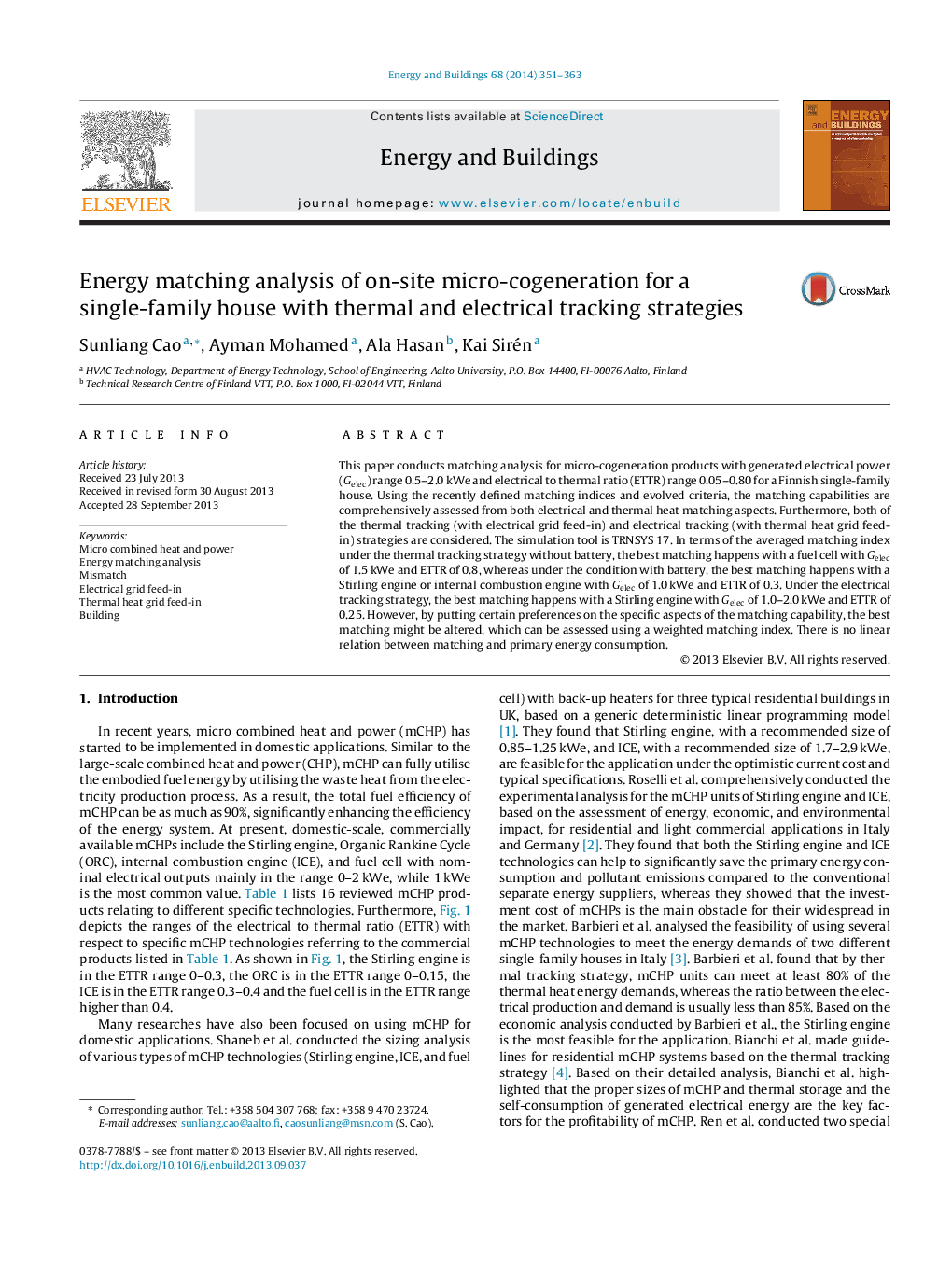| Article ID | Journal | Published Year | Pages | File Type |
|---|---|---|---|---|
| 10286007 | Energy and Buildings | 2014 | 13 Pages |
Abstract
This paper conducts matching analysis for micro-cogeneration products with generated electrical power (Gelec) range 0.5-2.0Â kWe and electrical to thermal ratio (ETTR) range 0.05-0.80 for a Finnish single-family house. Using the recently defined matching indices and evolved criteria, the matching capabilities are comprehensively assessed from both electrical and thermal heat matching aspects. Furthermore, both of the thermal tracking (with electrical grid feed-in) and electrical tracking (with thermal heat grid feed-in) strategies are considered. The simulation tool is TRNSYS 17. In terms of the averaged matching index under the thermal tracking strategy without battery, the best matching happens with a fuel cell with Gelec of 1.5Â kWe and ETTR of 0.8, whereas under the condition with battery, the best matching happens with a Stirling engine or internal combustion engine with Gelec of 1.0Â kWe and ETTR of 0.3. Under the electrical tracking strategy, the best matching happens with a Stirling engine with Gelec of 1.0-2.0Â kWe and ETTR of 0.25. However, by putting certain preferences on the specific aspects of the matching capability, the best matching might be altered, which can be assessed using a weighted matching index. There is no linear relation between matching and primary energy consumption.
Related Topics
Physical Sciences and Engineering
Energy
Renewable Energy, Sustainability and the Environment
Authors
Sunliang Cao, Ayman Mohamed, Ala Hasan, Kai Sirén,
